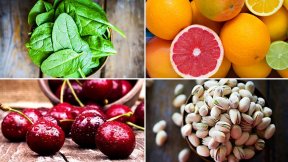
A lower risk of type 2 diabetes has been observed among individuals consuming food rich in antioxidants. This effect is largely contributed by fruit, vegetables, tea and other hot beverages, as well as moderate consumption of alcohol, as shown in a recent study from an Inserm research group, published in Diabetologia, the journal of the European Association for the Study of Diabetes (EASD). A diet rich in fruit and vegetables has previously been associated with a lower risk of certain cancers and cardiovascular conditions. An Inserm team (Health across generations, Center of Research in Epidemiology and Population Health, Villejuif, France) has now shown that such a diet is similarly associated with a reduced risk of type 2 diabetes.

The team already suspected there might be a link on the basis of previous studies showing that certain antioxidants, such as vitamins C and E, lycophenes or flavonoids, were associated with a reduction in type 2 diabetes risk. However, these studies looked only at isolated nutrients, not at the total antioxidant capacity of the diet. The researchers therefore wanted to verify whether overall diet, according to its antioxidant capacity, is associated with diabetes risk. Using data from the E3N cohort comprising French women recruited from 1990, then aged between 40 and 65 years, they followed 64,223 women from 1993 to 2008, all of whom were free from diabetes and cardiovascular disease at the time of inclusion in the study. Each participant completed a dietary questionnaire at the beginning of the study, including detailed information on more than 200 different food items. The results show that diabetes risk diminished with increased antioxidant consumption up to a level of 15 mmol/day, above which the effect reached a plateau. Increasing dietary antioxidants to this level could be achieved through eating antioxidant-rich foods such as dark chocolate, tea, walnuts, prunes, blueberries, strawberries or hazelnuts, to name just a few. Women with the highest antioxidant scores had a reduction in diabetes risk of 27 percent compared with those with the lowest scores.









